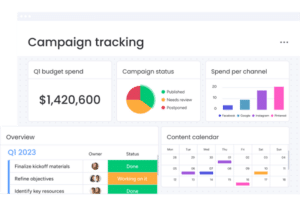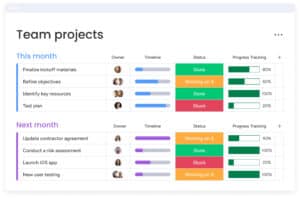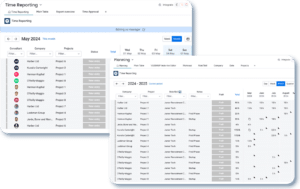Introduction to CRM User Training and Adoption
In today’s fast-paced business environment, Customer Relationship Management (CRM) systems stand as pivotal tools for managing interactions, supporting sales, and enhancing customer service. However, the true potential of these systems can only be unlocked through effective user training and adoption. This article delves into the best practices for CRM user training and adoption, ensuring that your team not only understands the CRM system but also effectively integrates it into their daily operations.
CRM systems, like any sophisticated software, can be complex and multifaceted. It’s not uncommon for businesses to invest in advanced CRM platforms only to find that their teams are not utilizing them to their full potential. This gap between capability and utilization is often due to a lack of proper training and resistance to adopting new systems. Thus, understanding and implementing the best practices for CRM user training and adoption becomes not just beneficial, but essential for any business looking to thrive in a competitive market.
The goal of this guide is to navigate you through the intricate process of CRM training and adoption. We will explore various strategies and methodologies that have been proven effective in various business environments. From identifying the common challenges in CRM training to leveraging tools like monday.com for a more streamlined and engaging training experience, this guide is your comprehensive resource for all things related to CRM user training and adoption.
As we move forward, keep in mind that the best practices for CRM user training and adoption are not just about learning how to use software; they are about fostering a culture of continuous learning and adaptation, which is vital for the ever-evolving landscape of customer relationship management.
Understanding the CRM User Training Landscape
A crucial step in implementing best practices for CRM user training and adoption is to gain a comprehensive understanding of the CRM user training landscape. This encompasses recognizing the essential components of effective training and acknowledging the common challenges that organizations face.
Key Components of Effective CRM Training
Effective CRM training is not a one-size-fits-all solution. It requires a tailored approach that addresses the specific needs and skills of your team. The core components of effective CRM training include:
- Comprehensive Understanding of CRM Features: Training should cover the breadth of the CRM’s capabilities, ensuring that users are aware of all the features and how they can be leveraged to improve their workflow and customer interactions.
- Role-Specific Training Approaches: Different team members use different aspects of the CRM. Sales representatives, for instance, may focus more on lead tracking and customer interaction history, while marketing teams might leverage customer data for campaign planning. Tailoring training to specific roles ensures that each team member can utilize the CRM effectively in their daily tasks.
Overcoming Common Challenges in CRM Training
Even with a well-planned training program, organizations often encounter obstacles in CRM training and adoption. Some of these challenges include:
- Resistance to Change: It’s human nature to resist change, especially when it comes to new technologies. Overcoming this resistance is key in CRM adoption, requiring a change management strategy that includes clear communication of the benefits and hands-on support during the transition.
- Technical Complexities: CRM systems can be complex, and without proper training, users may feel overwhelmed. Simplifying training materials and providing continuous support can help mitigate these challenges, leading to better adoption rates.
Understanding these components and challenges is the first step in applying the best practices for CRM user training and adoption. It sets the foundation for a successful CRM implementation, where users are not only proficient in using the system but also motivated to integrate it into their daily operations, driving business efficiency and customer satisfaction.
Omnitas Newsletter
Sign up for our monthly newsletter to stay up-to-date on our latest blog articles, videos and events!
Thank you!
You have successfully joined our subscriber list.
Strategies for Enhancing CRM Adoption
To optimize the benefits of a CRM system, it’s not enough to just train users; it’s crucial to ensure that they fully adopt the system in their daily workflows. This segment of our guide on the best practices for CRM user training and adoption focuses on strategic approaches to enhance CRM adoption across your organization.
Creating a User-Friendly CRM Environment
A user-friendly environment is key to encouraging CRM adoption. This involves:
- Customization and Personalization: Tailoring the CRM system to meet the specific needs and preferences of your users. This could mean customizing dashboards to show relevant data, or setting up personalized workflows that align with users’ daily tasks.
- Integrating CRM with Existing Workflows: The CRM should complement and streamline existing processes, not complicate them. Integration with other tools and systems that your team already uses can significantly boost adoption, as it helps users see the CRM as an enhancer of their current workflow rather than an additional burden.
Incentivizing and Motivating Users
Motivation plays a crucial role in the adoption of new systems. Strategies to motivate users include:
- Gamification Strategies: Introducing elements of gamification, such as leaderboards, badges, or rewards for reaching certain milestones in the CRM, can make the learning process more engaging and fun.
- Recognizing and Rewarding Active Users: Acknowledging and rewarding those who effectively use the CRM can inspire others to follow suit. This could be through formal recognition programs, incentives, or even casual acknowledgements in team meetings.
By employing these strategies, organizations can greatly enhance the adoption rates of their CRM systems. These best practices for CRM user training and adoption are not only about educating users on how to use the system but also about creating an environment that encourages and motivates them to integrate the CRM into their everyday work life. This holistic approach ensures that the CRM becomes an invaluable tool in your organization’s arsenal, driving efficiency, and improving customer relationships.
Leveraging monday.com as a CRM Tool and for User Training
When discussing the best practices for CRM user training and adoption, it’s essential to recognize tools that serve dual purposes. monday.com stands out as not just a platform for organizing and facilitating CRM training but also as an excellent and highly customizable CRM tool in itself.
monday.com as an Intuitive CRM Solution
Besides having all the must-have features of a CRM, monday.com excels due to its customization capabilities and user-friendly interface:
- Customizable CRM Features: monday.com allows businesses to tailor their CRM experience extensively. From custom fields to automated workflows, it adapts to your unique business needs, making it an ideal choice for diverse CRM requirements.
- Ease of Use and Adaptability: The platform is known for its intuitive design, making it easier for new users to adapt. This ease of use is crucial in CRM adoption, as it reduces the learning curve and enhances user engagement.
Using monday.com for CRM Training
In addition to being a robust CRM platform, monday.com is also an effective tool for facilitating CRM training:
- Interactive Training Modules: Utilize monday.com’s boards to create interactive training modules. These can include step-by-step guides, instructional videos, and quizzes, making the training process more engaging and comprehensive.
- Real-Time Collaboration and Feedback: monday.com’s collaborative features enable real-time interaction during training sessions. Trainers can provide instant feedback, and users can collaborate, fostering a more dynamic and interactive learning environment.
By leveraging monday.com, organizations can not only streamline their CRM processes but also create a more effective and engaging training experience. As we delve deeper into the best practices for CRM user training and adoption, it becomes clear that tools like monday.com are invaluable for their dual functionality in managing customer relationships and facilitating user training.
Advanced Tips for Ongoing CRM User Engagement
Beyond initial training and adoption, maintaining ongoing engagement with the CRM system is crucial for long-term success. This part of our exploration into the best practices for CRM user training and adoption focuses on advanced strategies to keep users engaged and ensure the CRM continues to deliver value.
Continuous Learning and Development
The world of CRM is constantly evolving, and so should the knowledge and skills of its users:
- Regularly Scheduled Training Sessions: To keep up with new features and best practices, hold regular training sessions. This not only refreshes existing knowledge but also introduces users to new functionalities and updates.
- Updated Resources for Advanced Features: Provide access to advanced learning materials such as in-depth guides, webinars, or workshops focusing on more complex aspects of the CRM. This encourages users to deepen their understanding and expertise.
Measuring and Analyzing User Engagement
Understanding how users interact with the CRM is key to fostering ongoing engagement:
- Utilizing Analytics to Gauge User Interaction: Employ CRM analytics to track how users are engaging with the system. Metrics like login frequency, feature usage, and data entry quality can offer insights into user behaviour and areas for improvement.
- Feedback Loops for Continuous Improvement: Establish channels for users to provide feedback about their CRM experience. This feedback can be invaluable in identifying issues, understanding user needs, and making necessary adjustments to training or system configuration.
By implementing these advanced tips for ongoing CRM user engagement, organizations can ensure that their investment in CRM systems continues to yield positive results. These best practices for CRM user training and adoption are about creating a culture of continuous learning and improvement, ensuring that the CRM system remains a dynamic and valuable tool for the organization.

Incorporating Make into CRM Training
Integrating automation tools like Make (formerly Integromat) can significantly enhance CRM training and adoption. This section of our guide on the best practices for CRM user training and adoption focuses on how Make can streamline and enrich the CRM training experience.
Streamlining Training with Automation
Make’s automation capabilities can be a powerful asset in CRM training:
- Automating Repetitive Training Tasks: Utilize Make to automate routine training tasks like scheduling sessions, sending reminders, or distributing training materials. This not only saves time but also ensures consistency in the training process.
- Customizing Learning Paths with Make: Create personalized training workflows for different user groups. For example, sales teams and customer service teams can have tailored training paths that focus on the specific CRM functionalities they use the most.
Enhancing User Experience Through Integration
Make’s strength lies in its ability to connect various applications, which can be leveraged to enhance the CRM training experience:
- Connecting CRM with Other Business Tools: Demonstrate the integration capabilities of Make by linking the CRM system with other tools used in the organization. This can help users understand how CRM fits into the broader ecosystem of their work environment.
- Simplifying Complex Processes: Use Make to simplify complex CRM processes. For example, automate data entry tasks or create workflows that help users navigate through intricate CRM functions, making the learning process more approachable and less daunting.
Incorporating Make into CRM training not only makes the training process more efficient but also showcases the potential of automation in enhancing CRM usability. As we delve into the best practices for CRM user training and adoption, tools like Make emerge as valuable allies, simplifying complex processes and customizing the learning experience, thereby facilitating a smoother and more effective CRM adoption journey.
Conclusion
As we wrap up our exploration of the best practices for CRM user training and adoption, it’s clear that the journey to effective CRM utilization is multifaceted. It involves not just understanding the technical aspects of CRM systems like monday.com and Make, but also embracing a culture of continuous learning, adaptation, and engagement. The integration of innovative tools, tailored training approaches, and ongoing engagement strategies are key to unlocking the full potential of CRM systems.
The landscape of CRM is continuously evolving, and staying abreast of these changes is vital for any organization seeking to maintain a competitive edge. Adopting these best practices ensures that your CRM system is not just a tool but a dynamic asset driving your business forward.
Interested in Expert Guidance for CRM Training and Adoption?
If you’re looking to enhance your team’s proficiency in CRM systems, specifically leveraging the power of monday.com and Make, we at Omnitas are here to help. Our expertise in CRM training and adoption can transform your CRM experience, ensuring your team is equipped with the skills and knowledge to excel. Book an introductory call with us below to discuss how we can tailor a CRM training and adoption strategy to your organization’s unique needs.
Stay Informed with Our Monthly Newsletter
Found this article valuable? Stay ahead of the curve by subscribing to our monthly newsletter below. You’ll receive insights, tips, and updates on the latest in CRM training, adoption strategies, and much more. Join our community of professionals who are transforming the way they do business with CRM.
As we continue to navigate the evolving world of CRM, remember that the journey is ongoing. With the right strategies, tools, and expertise, you can ensure that your CRM system is not just implemented but fully integrated into the heart of your business operations.
























